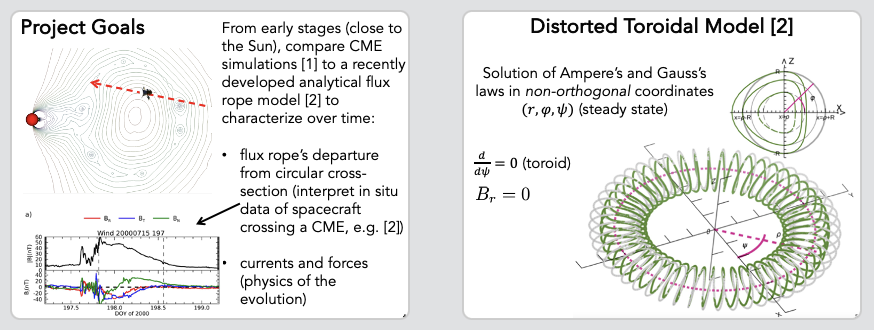Authors: Silvina E. Guidoni (American University), Teresa Nieves-Chinchilla (NASA Goddard Space Flight Center)
Interpreting in situ observations of coronal mass ejections (CMEs) has been a challenging task for decades. Time-series data taken along the path of spacecraft crossing these large-scale and complex structures are usually fitted to models of flux ropes with circular cross section. Distortions due to forces exerted by the ambient magnetic field, removal of magnetic flux by reconnection in front of the CME, or pressure from the flare reconnection exhaust at the back of the CME are rarely considered. Nieves-Chinchilla et al. 2023 recently proposed an analytical model of a toroidal flux rope with arbitrary cross section to investigate distortions of magnetic structures in the solar wind. Here, we applied this model to simulated eruptive flares/CMEs at their early stages (i.e., close to the Sun) to quantify their departure from circular cross section and to study their current distributions. We investigated the time dependence of these distortions from the eruption initiation and correlated them to external forces, such as magnetic and thermal pressure. We show that the initial conditions of CMEs are asymmetric, which needs to be considered in transport models of these structures from the sun to the interplanetary space.





